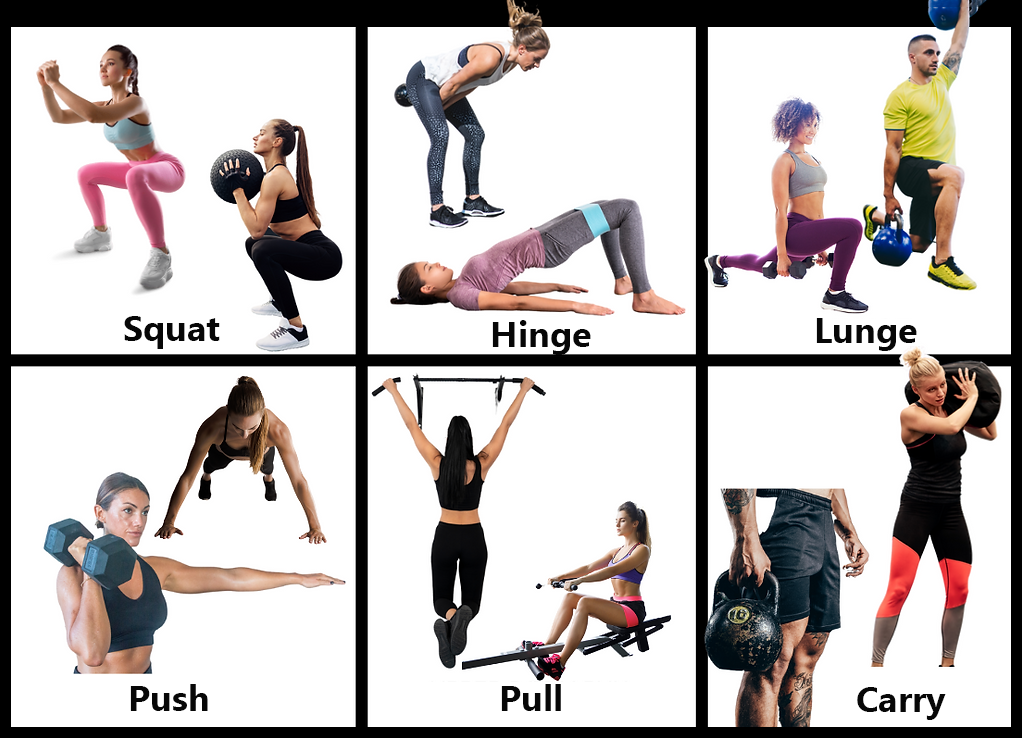6 Strength Training Moves Every Woman Over 40 Should Master

So, you know you need to start strength training—but where do you begin? The good news is, you don’t need fancy equipment or complicated workouts. If you want to stay strong, mobile, and independent, your workouts should focus on functional movements—the ones that mimic real-life actions like getting up from a chair, carrying groceries, and reaching overhead.
That’s where the six foundational movement patterns come in. These movements strengthen your entire body, prevent injuries, and help you age with strength and confidence. Rather than wasting time on ineffective exercises, focus on these six essential moves for real results.
The 6 Foundational Strength Training Moves for Women Over 40
These strength training moves for women over 40 are more than just a workout—they’re a practical way to preserve muscle, improve balance, and move with confidence in everyday life. Whether you’re lifting groceries or getting up off the floor, these movements support the kind of strength you actually need.
✅ 1. Squat (Lower Body Strength & Mobility)
Why it matters: Squatting is essential for sitting, standing, and moving with ease. Without strong legs and glutes, everyday activities become harder over time.
How to Do It:
Stand with your feet hip-width apart and toes slightly turned out.
Push your hips back first, then bend your knees to lower your body.
Keep your chest lifted and knees tracking over your toes.
Lower as far as comfortable, then push through your heels to stand back up.
Beginner Tip: If full squats feel tough, start with chair squats—sit down on a sturdy chair and stand up with control.
✅ 2. Hinge (Glutes, Hamstrings & Lower Back Stability)
Why it matters: A strong posterior chain (glutes, hamstrings, and back) protects your spine and prevents lower back pain while improving balance and power.
How to Do a Glute Bridge:
Lie on your back with your knees bent and feet flat on the floor.
Press through your heels and squeeze your glutes as you lift your hips.
Hold for a second at the top, then slowly lower back down.
Progression: To make this harder, try single-leg glute bridges, lifting one leg off the floor.
✅ 3. Lunge (Single-Leg Strength & Balance)
Why it matters: Lunging strengthens each leg individually, improves balance, coordination, and mobility, and helps prevent falls.
How to Do a Reverse Lunge:
Stand tall with feet hip-width apart.
Step one foot back and lower your body until both knees are at a 90-degree angle.
Push through your front heel to return to standing.
Repeat on the other leg.
Modification: If lunges feel too challenging, start with step-ups instead—step onto a low surface and back down.
✅ 4. Push (Upper Body & Core Strength)
Why it matters: Pushing motions help with everything from getting off the floor to carrying groceries and opening doors.
How to Do a Knee Push-Up:
Start on your hands and knees, hands slightly wider than shoulder-width.
Shift your weight forward so your body forms a straight line from your knees to your head.
Lower your chest toward the floor, keeping your elbows at a 45-degree angle.
Push back up to the starting position.
Modification: If knee push-ups feel too difficult, start with wall push-ups instead. The further your feet are from the wall, the more challenging it becomes.
✅ 5. Pull (Back & Posture Strength)
Why it matters: Pulling movements counteract poor posture, strengthen your back, and reduce the risk of injury—especially if you sit a lot.
How to Do a Bent-Over Row (With Dumbbells or Resistance Bands):
Hold a pair of dumbbells (or resistance band handles) with arms fully extended.
Hinge slightly at the hips, keeping your back straight.
Pull the weights toward your ribs, squeezing your shoulder blades together.
Lower the weights back down with control and repeat.
Beginner Tip: If you don’t have weights, use water bottles or canned goods to start.
✅ 6. Carry (Core, Grip & Full-Body Stability)
Why it matters: Carrying strengthens your grip, core, shoulders, and legs, all essential for lifting, carrying, and maintaining stability as you age.
How to Do a Farmer’s Carry:
Hold a challenging weight (dumbbell, kettlebell, or heavy object) in each hand.
Stand tall with your shoulders back and core engaged.
Walk slowly in a straight line, maintaining good posture.
Continue for 20-30 seconds, then rest and repeat.
Progression: If you only have one weight, try a suitcase carry, holding it in one hand and switching sides after 20 seconds.
How to Build a Stronger Body with These Moves
If you’re new to strength training, start by practicing one move from each category, aiming for 10 reps per exercise, and build from there.
Here’s a simple full-body beginner workout using these patterns:
✔️ Squat: 10 Bodyweight Squats
✔️ Hinge: 10 Glute Bridges
✔️ Lunge: 10 Reverse Lunges (5 per leg)
✔️ Push: 10 Knee Push-Ups
✔️ Pull: 10 Dumbbell Rows
✔️ Carry: 30-Second Farmer’s Carry
Do this 2–3 times per week, and you’ll start noticing improvements in strength, balance, and endurance.
Adding these strength training moves for women over 40 into your weekly routine is one of the most powerful things you can do for your body. Master them now and you’ll move better, feel stronger, and prevent injuries for years to come.
beginner strength training foundational exercises functional fitness healthy aging lynnmontoyafitness Menopause midlife fitness muscle after 40 Perimenopause Post menopause strength after menopause strength training at home Strength training for women women over 40 women over 50 women’s health

